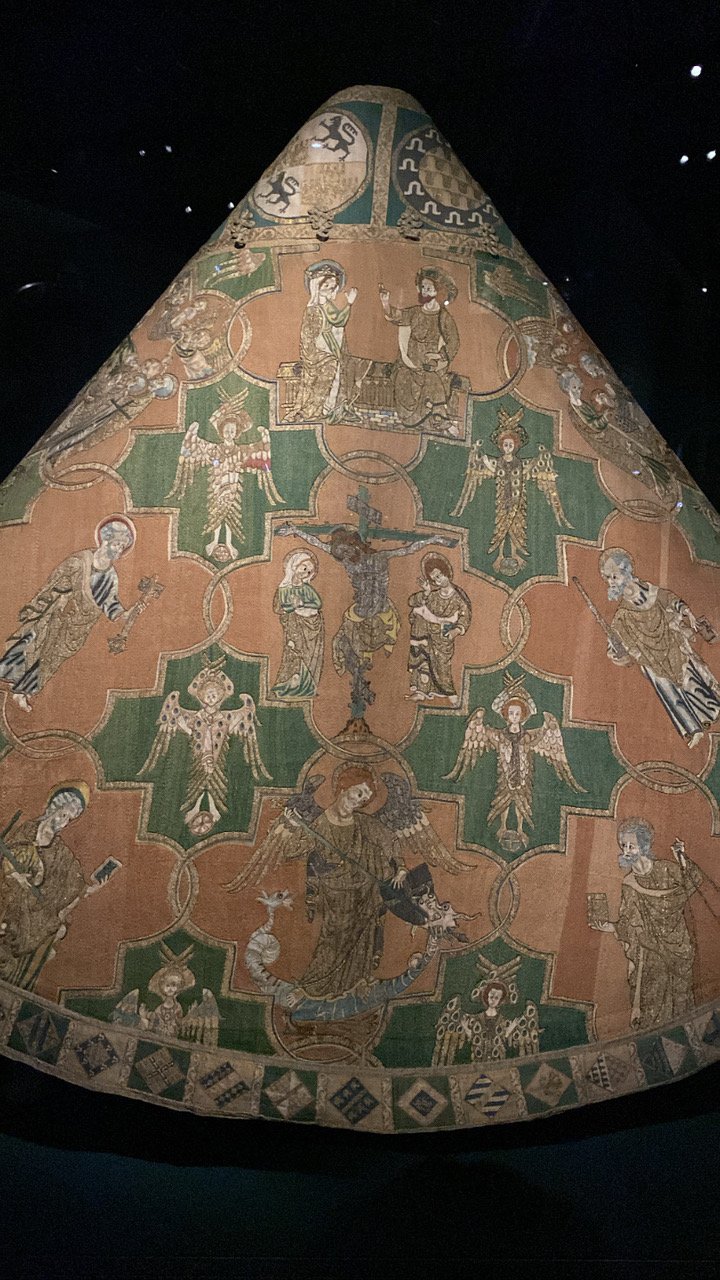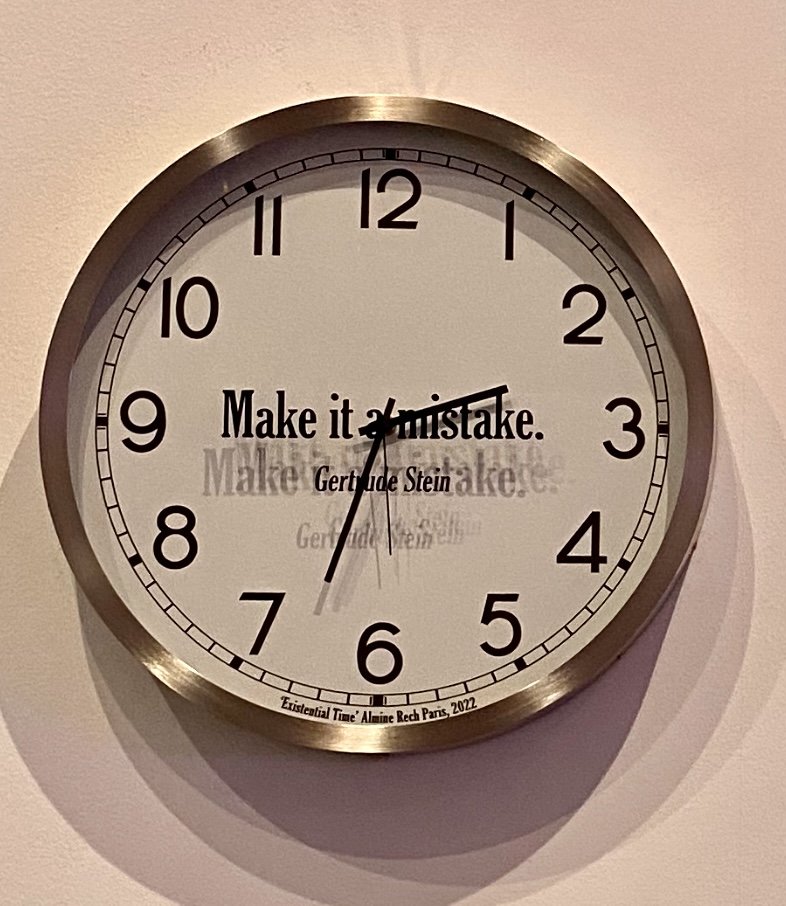An Embarrassment of Riches
‘When the English Spoke French’ at Hotel de la Marine, Leisure Wear at Palais Galliera, Gertrude Stein & Picasso at Luxembourg
Bienvenue and welcome back to Musée Musings, your idiosyncratic guide to Paris and art. Firstly, thanks to those who responded to last week’s post on Zloty, which included a few walls that my son, the glassblower and street artist, painted in Paris and Copenhagen this past summer.
It was an eventful week. Sunday morning began with coffee at the Café Mulot in the Maison Victor Hugo, which I highly recommend. Although Julia believes that the Maison Mulot on the rue de Seine is not what it used to be, I am convinced that the Café Mulot in the Place des Vosges is everything it needs to be. Tucked away in a lovely courtyard, it’s a relaxing respite from the cafés around the Place which can get crowded and noisy. The boisson selection is fine, but what I like best are the mini-viennoiseries. Which are just big enough. And definitely tasty enough. My favorite is the little pocket of apple pie, chausson aux pommes. As it gets cooler outside, no worries - the indoor seating is just as pleasant and welcoming as the terrace.
I chatted with a new friend (American) about many things, concentrating on his area of expertise - international politics. Eventually, we settled upon Proust. Like me, he is reading Proust for the first time and also, like me, he is on Book Three, Côté Guermantes. Unlike me, he is only reading the French. But I am happy with my decision - to read the English translation for the narrative and then, the original French for the beauty of Proust’s prose.
After café, I headed off to the Hotel de la Marine. The metro arrived just as I did. I hopped into the first car and looked at the list of stops. There are 4 lists in each car, two in the front, left and right and two in the back, also left and right. I looked at the list closest to me. The last stop before mine (Concorde) was Madeleine. On the list I looked at, two words were added to the name of that stop: de Proust. (Figure 1) Seriously, in Paris, that guy is everywhere!
Figure 1. Someone added ‘de Proust’ for the Madeleine stop on the metro
The exhibition I traveled to the Hotel de la Marine to see, ’When the English Spoke French’ has been extended through December. Sumptuous objets in a jewel-box setting. The pieces on display include sculpture, textiles, ceramics, manuscript illumination, metalwork and jewelry. Among the objets is the 12th-century Gloucester Candlestick, described as a “masterpiece of English goldsmith work” and the early 14th century Syon Cope (a cloak worn by a priest) considered a “masterpiece of English embroidery.” The enameled Becket Casket, depicting the 1170 murder of Archbishop Thomas Becket in Canterbury Cathedral, is also on display. (Figs. 2, 3, 4)
Figure 2. Gloucester Candlestick, 12th century
Figure 3. Syon Cope, 14th century
Figure 4. Becket Casket, depicting 1170 murder of Archbishop Thomas Becket in Canterbury Cathedral
The objects are indeed lovely. But it is the premise behind the exhibition that is most interesting. According to the curators, it is generally believed that England was a backwater during the middle ages compared to Europe and especially France. But they contend that this assumption is inaccurate. It was during the English Reformation that much of what had been created for the Catholic Church was destroyed. The rampage was much worse in England than it was in Europe. Since what little survives is of such high craftsmanship, the curators posit that much of what was destroyed must have been, too. As I was leaving, I looked out the window and into the courtyard below. There were several groups of dancers in medieval costumes taking turns performing traditional dances. (Fig. 5) Walking home along the Tuileries and then through the Marais was a lovely way to end the day. Walking in the city - you just can’t beat it.
Figure 5. Dancing in the Courtyard of Hotel de la Marine
Another day, I went to the Palais Galliera, the Musée de la Mode and saw two temporary exhibitions. One was on Azzedinee Alaïa, the dress designer. Not his own designs, but the haute couture gowns he collected during his lifetime. Of which there are apparently thousands. Of which 140 were on display. Some were by designers I knew, some by designers who were completely new to me. (Figs 6, 7) The exhibition focused on what Alaia learned from each designer.
Figure 6. Day Dress by Elsa Schiaparelli
Figure 7. Day Dress by Adrian, Costume designer for MGM who became dress designer
The other exhibition, called Fashion on the Move, was fun and provocative. It traces three hundred years of clothing, mostly for women. Specifically how that clothing increasingly permitted the body freedom of movement. Although the process wasn’t straight forward - there were setbacks and hiccups, moments when women’s clothing became constraining again. Increased freedom of movement meant that the wearer could pursue leisure time activities - like strolling and swimming, horse back riding and cycling. Two aspects of the exhibition caught my attention - knit garments and athletic shoes. Being liberated from a corset must have been exhilarating. (Fig. 8) Alas, that didn’t mean that soft flesh could find its own place, as in paintings by Rubens (Fig. 9) and Rembrandt. The demands of clinging knitwear for women whose figures include a bit of flesh, led to girdles, then Spanx and its competitors. (Fig. 10)
Figure 8. Corset, 1869
Figure 9. Judgement of Paris, Peter Paul Rubens
Figure 10. Honeylove, (Spanx competitor)
The wall of tennis shoes was all about the collaboration between haute couture designers and sport shoe companies. (Fig. 11) The exhibition will be here through the 2024 Paris Olympics. The subject of leisure fascinates me. I will tell you more about this exhibition in an upcoming post on the exhibition (about Leisure) that I saw at the Musée Pierre Bonnard a few weeks ago in Le Cannet on the Côte d’Azur.
Figure 11. Wall of tennis shoes detail, Palais Galliera
Finally, I saw one more museum exhibition before heading down to the Dordogne for a few days to close up my little pigeonnier and the 9 bedroom farmhouse for which I am ‘gerant’ (director).
The title of the exhibition, at the Musée du Luxembourg, was GERTRUDE STEIN ET PABLO PICASSO L’invention du langage (the invention of language). It was an exhibition mostly about words. How could it be otherwise with an exhibition focusing on Gertrude Stein. (Figs 12, 13).
Figure 12. Gertrude Stein & Pablo Picasso L’Invention Du Langage, Musée du Luxembourg
Figure 13. Gertrude Stein, portrait bust, Jacques Lipchitz, 1920
We all know something about Gertrude Stein. We’ve seen Woody Allen’s Midnight in Paris in which the inimitable Kathy Bates plays the role of the gal who was born in Pittsburgh, PA, who was raised in Oakland, CA, (about which she said there wasn’t a there there) and who moved to Paris with her brother Leo, when she was 29. And who stayed in Paris (as a Jew in Nazi occupied Paris) until her death in 1946.
In Paris, she befriended artists and collected their art, she held a weekly salon where the leading figures of modernism, in literature and art, like Hemingway and Fitzgerald, Picasso and Matisse, met. And she wrote poetry.
The exhibition at the Musée Picasso, designed by Paul Smith (which I liked so much), was a precursor for this exhibition. In a little room, tucked away and easy to miss if you didn’t know it was there, a recording of Gertrude Stein reciting one of her poems played on a loop. Since I saw that exhibition four times, and visited that room each time, I was more prepared than others, I suppose, for the immersion into Stein’s poems that the exhibition at the Luxembourg offered.
Art history exhibitions mostly start with precedents, that is, the artists and movements that influenced the artist whose work the exhibition presents. This exhibition takes Picasso and Stein as the starting point for the work of succeeding generations of artists. There are painters and sculptors, of course, who were mostly influenced by Picasso. For me, the revelations were all the choreographers and musicians, playwrights and cinematographers, who have been influenced by Stein. Through some paintings but mostly through stills and videos, we get a taste, a glimpse of all the various creatives Stein influenced. And scattered throughout, are pertinent testimonials printed on the walls, in English and French, by a variety of artists for whom Stein’s innovations paved the way. At various places in the exhibition, you can hear Stein reciting her poems. In many of the smaller videos, there are ear phones so that you can hear the words and music that you see performed. (Figs. 14, 15)
Figure 14. Four Saints in Three Acts, opera Virgil Thomas, libretto Gertrude Stein, 1933
Figure 15. Minutia, choreographed by Merce Cunningham; music by John Cage; decor by Robert Rauschenberg, 1954 (1977 performance)Figure 15. Minutia, choreographed by Merce Cunningham; music by John Cage; decor by Robert Rauschenberg, 1954 (1977 performance)
Perhaps because I love words so much, I just couldn’t get enough of all the convoluted and clever and sometimes silly and sassy ways words are stretched and chopped and reassembled in so many of the art works in this exhibition. There was a bank of clocks, on each of which was a phrase that made lots of sense and was nonsense, too. (Figs. 16, 17)
Figure 16. Wall of Clocks with quotations from a different person in each (see below)
Figure 17. The beginning is always today - Mary Wollstonecraft
Figure 17a. Make it a mistake, Gertrude Stein
I am beginning to understand my daughter’s obsession with Bruce Nauman. In Venice last year, she fell in love with a video of his at the Punto della Dogana (Pinault Collection). Called Walk with Contrapposto, the video shows the artist walking in a narrow wooden corridor built inside his studio while trying to maintain the contrapposto pose. She was entranced, I must admit, I mostly didn’t get it. (Fig. 18)
Figure 18. Walk with Contrapposto, Bruce Nauman, Punto della Dogana (P8nault Collection) Venice
But the exhibition has transformed me into a Nauman fan. Why? Words, of course! in this exhibition, there are four videos by Nauman, all of them talking heads. Actually two of them are talking mouths - one of which repeats the phrase ‘Thank You,’ the other, an upside down mouth repeats the words ‘Lip Sync’. Two other videos, side by side, are more complicated. In one, a man is talking. In the other, a woman talks. The same text. It is interesting to see how gender, race and expression change the meaning and significance of identical words. (Fig. 19)
Figure 19. Good Boy / Bad Boy, Bruce Nauman
Even Mademoiselle Angelina’s, museum’s café, has two items on the menu celebrating these two artists and this exhibition. One is a savory dish, Cubisme Bar Carpaccio which is “Sea Bass served with black radish, beetroot, carrot and celeriac pickles, brown rice and a lime vinaigrette.” The other is a dessert: The Cubisme Pastry, created by Angelina's Head Pastry Chef Christophe Appert. It is “made up of a crunchy praline and dark chocolate base, a chocolate brownie, a hazelnut crunch, a hazelnut biscuit, soft caramel, topped with a dark chocolate mousse and a light vanilla mousse.” Of course it is! (Fig. 20)
Figure 20. Pâtisserie Cubisme, Mademoiselle Angelina, Musée Luxembourg
Copyright © 2023 Beverly Held, Ph.D. All rights reserved
Dear Reader, I hope you enjoyed reading this article. Please sign up below to receive more articles plus other original content from me, Dr. B. Merci!
And, if you enjoyed reading this review, please consider writing a comment. Thank you.
Comments, for which I am truly grateful:
New comments on Strictly Street:
Fabulous article! I had heard of Zloty, but you really made me realize the man and his work inspired by his background. We are all formed by who we are by her early experiences.Your son is so talented! Deedee, Baltimore
In my humble opinion, Nic is an artist, his work shows beauty and talent. (Editor’s note: thank you!) Zloty, not so much, ugly for the most part. G. Vincent





















